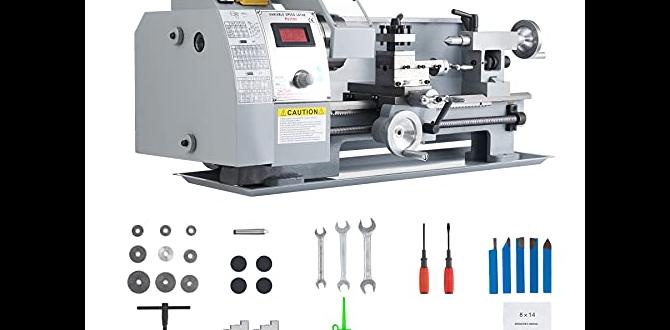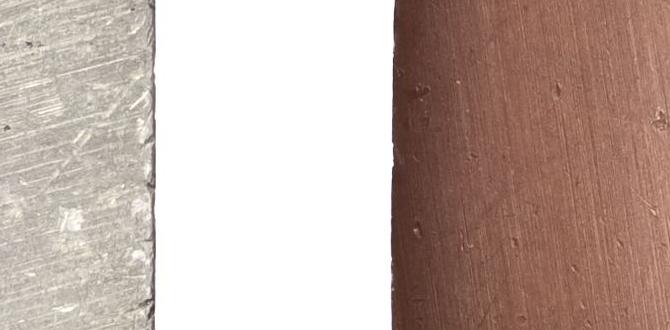Wood lathe chuck tightening technique is a foundational skill for any woodturner, regardless of their experience level. A properly secured workpiece is not just about safety; it’s the bedrock upon which successful and intricate turning projects are built. A loose chuck can lead to vibrations, inaccurate cuts, and, in the worst-case scenario, a dangerous projectile flying from the lathe. Mastering the correct tightening method ensures a stable foundation and allows you to focus on the artistry of shaping wood.
The Importance of a Secure Grip
Before delving into the ‘how-to’, understanding why a precise wood lathe chuck tightening technique is paramount is crucial. The chuck is the primary interface between your lathe and your wood. It’s responsible for holding the blank firmly in place as it spins at potentially high speeds. Any slippage or instability directly translates to a compromise in the quality of your work and a significant safety hazard.
Vibrations are a common symptom of improper tightening. These can manifest as chatter marks on your workpiece, making sanding a laborious process. More critically, excessive vibration can fatigue the chuck’s jaws, the wood itself, or even the lathe spindle over time, leading to premature wear and tear. The ultimate risk, however, is the chuck dislodging from the spindle. Modern chucks are designed with robust safety features, but a lack of diligence in tightening can overcome even the best engineering. Think of it as the pilot meticulously checking all controls before takeoff – in woodturning, that vital pre-flight check is the secure tightening of your chuck.
Understanding Your Chuck and Its Jaws
Different chucks have varying jaw designs, but the fundamental principle of tightening remains consistent. Most modern wood lathe chucks utilize a gear-driven system, where a scroll mechanism expands or contracts opposing jaws simultaneously. The jaws themselves are designed to grip the wood from the inside (for hollow forms) or the outside (for solid blanks).
Before you even approach the lathe, familiarize yourself with your specific chuck model. Read the manufacturer’s manual. Understand how the tightening key operates and how the jaws move. Pay attention to the material of the jaws. Are they serrated for aggressive grip, or do they have softer inserts for delicate work? This knowledge will inform how much pressure you apply and what part of the workpiece you are gripping.
The Step-by-Step Wood Lathe Chuck Tightening Technique
Achieving the optimal wood lathe chuck tightening technique involves a systematic approach, focusing on both initial placement and final securing:
1. Select the Right Jaws for Your Project: The first step is choosing the appropriate set of jaws for your workpiece. For example, if you’re turning the outside of a bowl blank, you’ll use external jaws. If you’re hollowing the interior, internal jaws will be necessary. Ensure the jaws are clean and free of debris.
2. Position the Gripping Area:
External Grip: Place the workpiece onto the chuck so that the jaws can grip the outside. Ensure the workpiece is centered as much as possible on the chuck’s axis.
Internal Grip: Insert the jaws into the hollowed-out portion of your workpiece. Again, aim for central placement.
3. Engage the Jaws Gently: With the workpiece roughly positioned, insert the chuck key. Turn it clockwise to expand the jaws (for external grips) or counter-clockwise to contract them (for internal grips). Don’t force it initially. Just bring the jaws into light contact with the wood. This is about establishing a connection, not applying significant pressure.
4. Check for Squareness and Centering: With the jaws lightly engaged, it’s time for a crucial check.
Visual Inspection: Look at the workpiece from various angles. Is it centered? Does it appear reasonably square?
Dial Indicator (Optional but Recommended): For precision turning, a dial indicator is invaluable. Mount it to the tool rest and bring the probe into contact with the workpiece. Rotate the lathe by hand and observe the indicator’s reading. Aim for the lowest possible runout. Make minor adjustments to the workpiece’s position on the chuck until you achieve satisfactory centering.
5. Apply Initial Tightening: Once you’re satisfied with the centering, begin applying more firm, but still moderate, pressure with the chuck key. Turn it a few full rotations, ensuring all jaws are equally engaged.
6. The ‘Snug and Secure’ Principle: This is perhaps the most critical phase of the wood lathe chuck tightening technique. The goal is to achieve a grip that is “snug and secure,” not overtightened. Over-tightening can:
Crush the wood fibers, weakening the grip and potentially leading to breakage.
Damage the chuck’s internal gearing or the jaws themselves.
Make it difficult to remove the chuck later.
As you tighten, feel the resistance. When you encounter firm resistance, give it one or two more firm turns. You’re looking for a solid, unwavering connection. Avoid jerky motions or using excessive body weight.
7. The ‘Tap Test’ (A Refined Technique): After achieving what you believe is a secure grip, a gentle tap can sometimes reveal subtle movement. With the lathe off and the power disconnected, gently tap the workpiece with the heel of your hand in the direction of rotation. If you feel or hear any slight shift, tighten a little more. This isn’t about brute force; it’s about ensuring the wood is seated firmly against the jaws.
8. The Final Check – Rotation by Hand: Before powering on the lathe, always manually rotate the spindle several full revolutions by hand. This allows you to:
Feel for any binding or obstruction.
Confirm that the workpiece spins freely without wobbling excessively.
Listen for any unusual sounds.
If any issues are detected, power off the lathe, disconnect it, and re-examine your tightening process.
Common Mistakes to Avoid
Under-tightening: This is the most dangerous mistake, leading to workpiece ejection. Always err on the side of slightly tighter rather than looser.
Over-tightening: As discussed, this can damage the wood and the chuck.
Uneven Tightening: Not ensuring all jaws are equally engaged can lead to an off-center workpiece and increased vibrations.
Assuming it’s tight: Never assume a chuck is tight just because it feels like it. Always perform the checks.
* Ignoring the workpiece’s condition: Soft, punky wood requires a more delicate approach than dense hardwood. Be mindful of the wood’s integrity.
Conclusion
Mastering the wood lathe chuck tightening technique is an ongoing process that improves with practice and attention to detail. It’s a fundamental step that underpins every successful and safe turning experience. By understanding your equipment, following a systematic approach, and listening to the subtle cues your lathe and workpiece provide, you can ensure a strong, reliable grip, allowing you to explore the full creative potential of woodturning with confidence. Remember, a secure chuck is the foundation of a safe and rewarding hobby.





